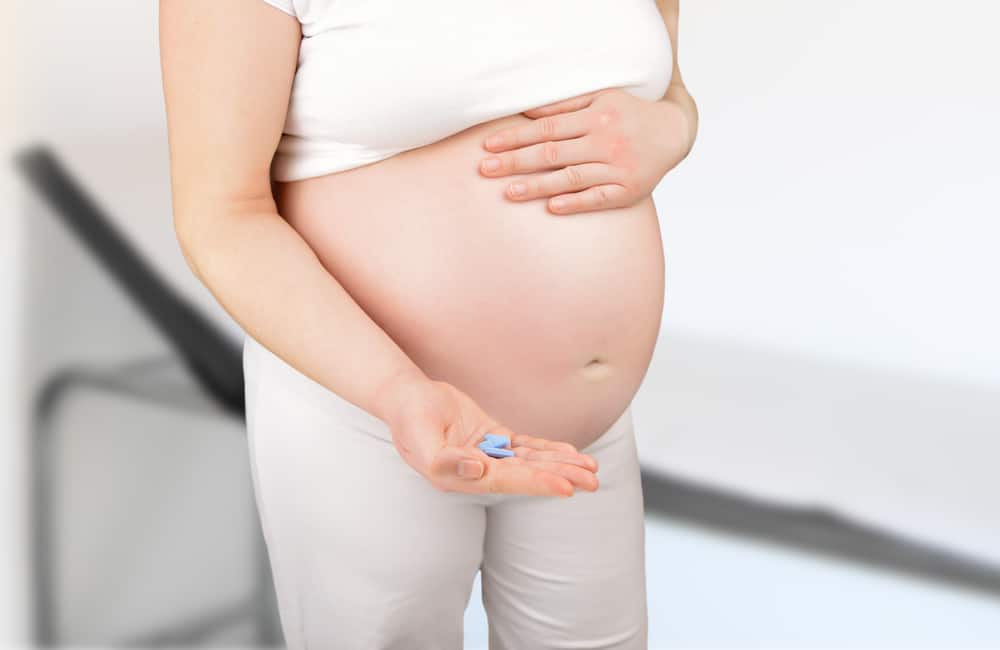Contents:
Medical Video: Prepparing for Upper GI Endoscopy
Definition
What is upper gastrointestinal endoscopy?
Upper gastrointestinal endoscopy is a medical procedure to visually examine your upper gastrointestinal tract, starting with the esophagus, stomach and duodenum. The procedure is carried out using instruments such as thin and flexible cables, called endoscopes. The end of the endoscope is inserted into your mouth and slowly pushed into the throat through the esophagus, stomach and duodenum.
The entire upper digestive tract can be observed and examined during this medical procedure. Therefore, it is not uncommon for upper GI endoscopy (UGI) also to be called esophagogastroduodenoscopy (EGD).
Your doctor can look for possible open wounds to the stomach (stomach ulcers), irritation, tumors, infections, or bleeding. Tissue samples can be taken (biopsy), polyps can be removed, and bleeding can be overcome during this procedure. Endoscopy will reveal problems that you may have and not be detected by X-ray tests, and can usually rule out the possibility of surgery.
When should I undergo upper gastrointestinal endoscopy?
Your doctor may recommend an endoscopic procedure for:
- Check for symptoms. Endoscopy can help doctors determine the signs and causes of digestive disorders, such as nausea, vomiting, abdominal pain, difficulty swallowing, and bleeding in your digestive tract.
- Diagnosis. The doctor will take samples of body tissue (biopsy) to be tested for possible diseases and other conditions, such as anemia, bleeding, irritation, diarrhea, or cancer in your digestive system.
- Treat. Your doctor can operate special medical devices through the endoscope to immediately solve problems in your digestive system, such as closing open wounds in blood vessels that cause bleeding, widening the esophagus, lifting polyps or other foreign objects.
Endoscopic procedures can be accompanied by other procedures, such as ultrasound. An ultrasound (probe) transmitter will be attached to the endoscope to produce an image of the wall of the esophagus or the inside of your stomach. Ultrasound endoscopy can also help your doctor take pictures of organs that are difficult to reach, such as the pancreas. The latest endoscope is now equipped with HD video to produce clear and sharp images.
Some endoscopes can now help your doctor to operate the latest technology, namely narrow band imaging (technology for coloring capillary blood vessels in the digestive tract with light without rays) infrared) which can better detect precancerous conditions, such as Barrett's esophagus.
Prevention & warning
What should I know before undergoing upper gastrointestinal endoscopy?
Endoscopy can be done after an upper gastrointestinal (UGI) examination identifies a problem. Endoscopic retrograde cholangiopancreatogram (ERCP) is an examination that will drain the liver, gallbladder, bile ducts, and pancreas. This procedure can be done to detect the cause of jaundice (jaundice) if the doctor assesses you have gallstones on your bile duct or pancreas, and during other examinations (such as ultrasound, liver scan, and x-ray results) cannot be the only reference .
Are there alternatives other than surgery?
Barium meal is an x-ray examination for the upper digestive system. Examination of urea breath can be used to detect bacteria (helicobacter pylori) which can cause stomach ulcers.
Process
What should I do before undergoing upper gastrointestinal endoscopy?
Discuss with your doctor about the health conditions that you have and all medications, both prescription / non-prescription, vitamins, and supplements you are taking, including:
- aspirin or drugs containing aspirin
- arthritis related medicines
- nonsteroidal anti-inflammatory drugs, such as ibuprofen and naproxen
- blood thinner
- drugs related to blood pressure
- diabetes medication
Your upper GI tract will be examined during this procedure. The doctor will find it difficult to examine and find problems clearly if the channel is covered with food or drinks. Therefore, the doctor will advise you to fast; not eating and drinking, smoking, and chewing gum for 8 hours before the procedure.
What is the process of upper gastrointestinal endoscopy?
Doctors run upper gastrointestinal endoscopy in a hospital or clinic. First, you will be sedated through an IV which will help you relax and be comfortable during the procedure. In some cases, the procedure can be done without anesthesia. You will be given liquid anesthesia to rinse or spray anesthesia at the back of your throat. The anesthesia will numb your throat and soothe the gag reflex. The medical staff will monitor your vital signs and keep you comfortable.
You will be asked to lie on your side on the operating table. The doctor will slowly insert the endoscope into your esophagus towards the inside of the stomach and duodenum. A small camera mounted on the endoscope will transmit video images to the monitor, clearly showing your digestive tract. The endoscope will pump air into your stomach and duodenum so that it can be seen more clearly.
During the procedure, the doctor may do the following:
- do a biopsy on your digestive organs tissue. You will not feel the biopsy
- stop bleeding
- Perform other medical procedures that are deemed necessary, such as widening the narrowing of the organ
The length of the procedure is usually between 15-30 minutes. Endoscopes do not interfere with breathing, and patients generally fall asleep during the procedure.
What should I do after undergoing an upper gastrointestinal endoscopy?
After the procedure, you might:
- stay in the hospital or clinic for 1-2 hours to consume the effects of the anesthetic
- feeling temporary nausea and bloating
- feel sore throat for 1-2 days before you return to normal when you can swallow well
- resting at home all day
After the procedure, you — or the relation or family member who comes with you — will receive instructions on how to care for yourself after the procedure. It is recommended to follow these guidelines.
What complications can occur?
Endoscopy is a very safe procedure. However, there are several risks of minor complications that may occur. Rare complications, including:
- Bleeding. The risk of bleeding after an endoscopic procedure will increase if the procedure involves a biopsy (taking tissue samples to be tested) or treating digestive system problems. In rare cases, the bleeding requires blood transfusions.
- Infection. Some endoscopy involves examination and biopsy, and the risk of infection is fairly low. This risk can increase when additional procedures are carried out as part of your endoscopic procedure. Certain infections are mild and can be treated with antibiotics. Your doctor may give you preventive antibiotics before the procedure starts if he or she thinks you have a high risk of contracting the infection.
- Sobek wound. Tearing wounds in the esophagus or other digestive tract organs may require hospitalization, and sometimes surgery is needed to repair them. This risk is very low — only 3: 5 out of 10,000 diagnoses.
You can reduce the risk of complications with caution and always follow your doctor's rules regarding preparation for receiving endoscopy, such as fasting and stopping certain medications.
Explanation of Test Results
What do the test results mean?
Your doctor may discuss the results and what was found during the procedure immediately after the procedure was over. However, the anesthetic given may affect your focus and memory, so most doctors will wait until the sedative effect is completely exhausted. Other results may be received after 2-4 days. Examination for certain types of infections may take up to several weeks.
| Upper gastrointestinal endoscopy | |
| Normal: | The esophagus, stomach, and duodenum look normal |
| Abnormal: | Irritation or abrasions in the esophagus (esophagitis), stomach (gastrtis), or small intestine are found |
| Bleeding, ulcers, tumors, torn wounds, or esophageal verices in the esophagus, stomach, and duodenum are found. | |
| Found hiatal hernia | |
| There is a narrowing of the esophagus | |
| Foreign objects found in the esophagus, stomach, and duodenum | |
Biopsy samples can be taken for:
- find out whether the tumor or ulcer wound detected contains cancer cells
- identify the type of bacteria Helicobacter pylori (H. pylori)
Some conditions can change the results of upper gastrointestinal endoscopy. Your doctor will discuss with you about abnormal results that may be related to symptoms or signs of your past health condition.
What affects the test?
You may not be able to run the test or the results may not help much if you have just run a procedure that uses barium contrast material. Upper Gastrointestinal Endoscopy should not be done less than two days after carrying out the Upper Gastrointestinal (UGI) series so that your doctor can examine your stomach and small intestine.
Hello Health Group does not provide medical advice, diagnosis or treatment.











